What’s in Bloom Now? Garden Updates July 15 – 29
By Thea Hegland
From the moment you arrive you are struck by the surrounding beauty. This magical oasis is nestled amongst a stunning backdrop of a deep serene forest on the shores of Tod Inlet. Impressive Thuja plicata (Western red cedar) and Pseudotsuga menziesii (Douglas fir) tower along the pristine green water creating a peaceful ambience.
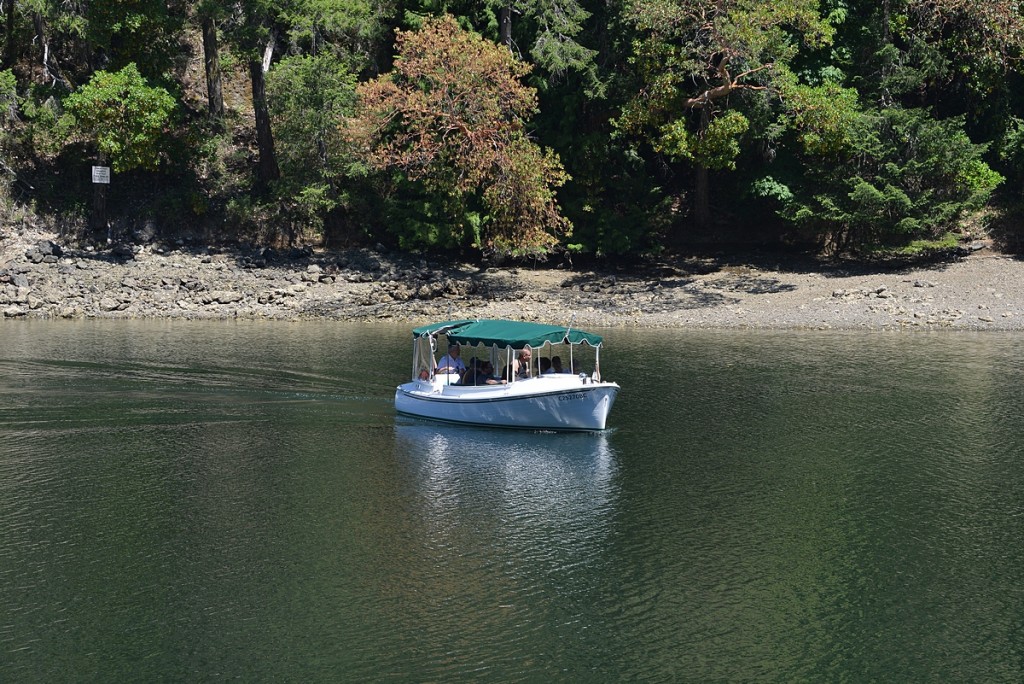 One of our electric boats near the Tod Inlet shoreline
One of our electric boats near the Tod Inlet shoreline
We value our natural surroundings and the importance it holds to this very special place. These areas are a significant part of The Gardens’ backbone and structure, and are essential in providing habitat for wildlife. Native wildflowers such as Achillea (Yarrow) and native Lathyrus (Sweet pea) grow freely in background areas and are essential in attracting pollinators to the garden. With climate changes, our native woodland has begun to suffer and we are taking this very seriously. Proactive and forward thinking, we have implemented a woodland management practice. Background trees are regularly assessed for risk, disease and drought. The woodland is responsibly watered and more drought-tolerant native shrubs and trees are planted.
The recent rains we have experienced this July have been a relief. As hard on the flowers as it may be, the lush rewards are verdant, and after a few days of sunshine, the flowers perk up and the garden continues to grow with all the good stuff delivered by the West Coast weather.
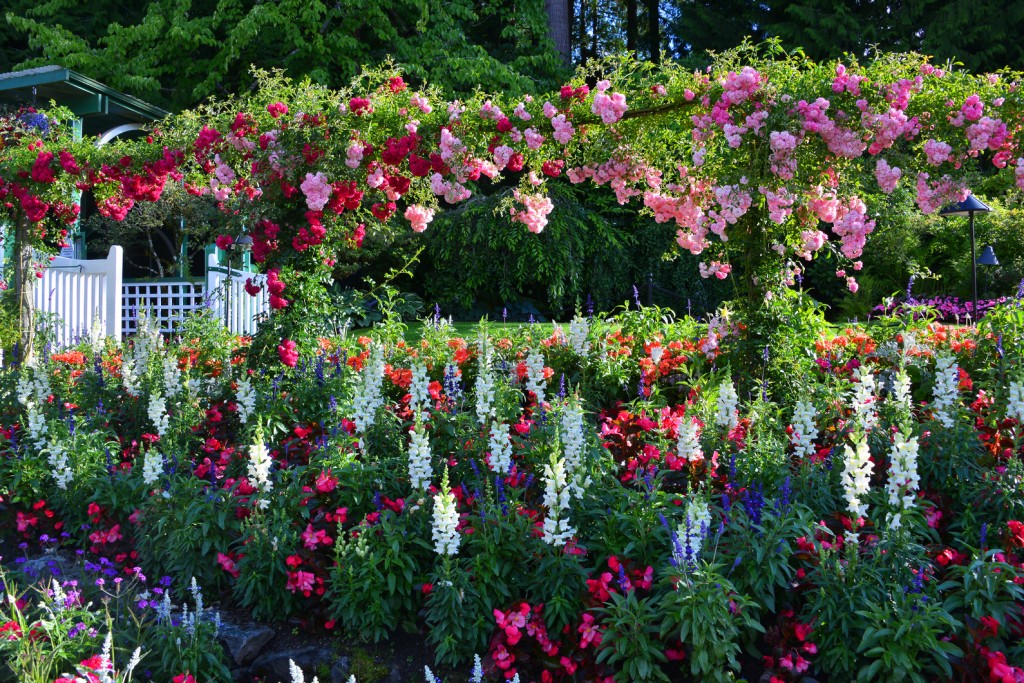 Layer upon layer of colourful summer blooms
Layer upon layer of colourful summer blooms
Highlights at this time include the magnificent Catalpa speciosa (Indian bean tree) which is in full bloom with white orchid like blossoms on the Concert Lawn.
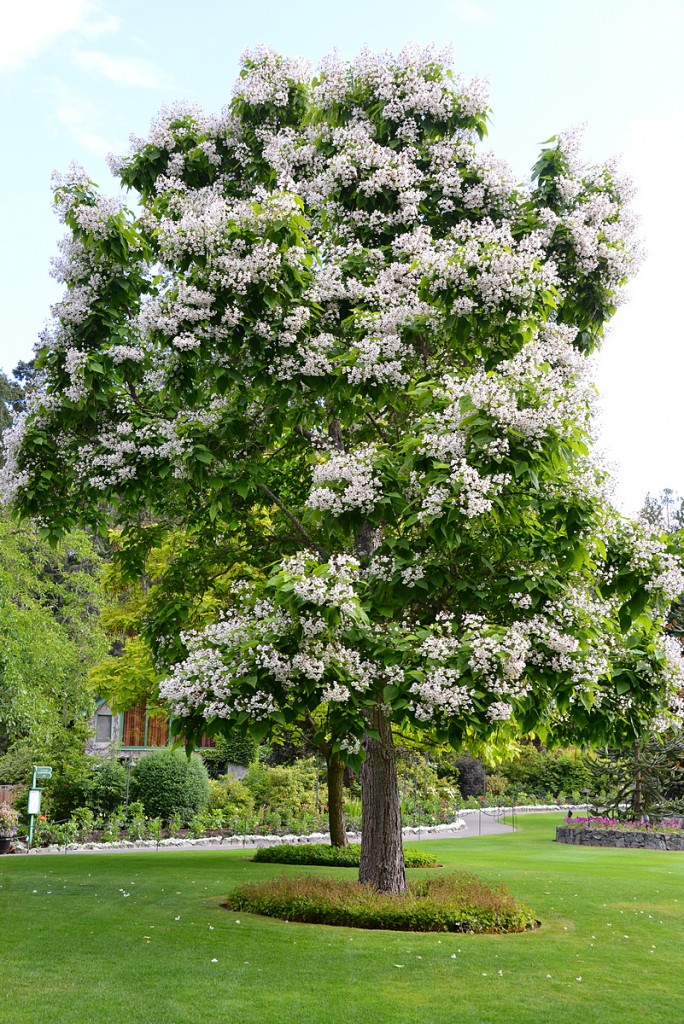 Catalpa speciosa (Indian bean tree)
Catalpa speciosa (Indian bean tree)
The spirited perennial borders are ever evolving and full of many surprises. Our container plantings are reaching their prime; inspired combinations of unusual plants mixed with the old classics can be found.
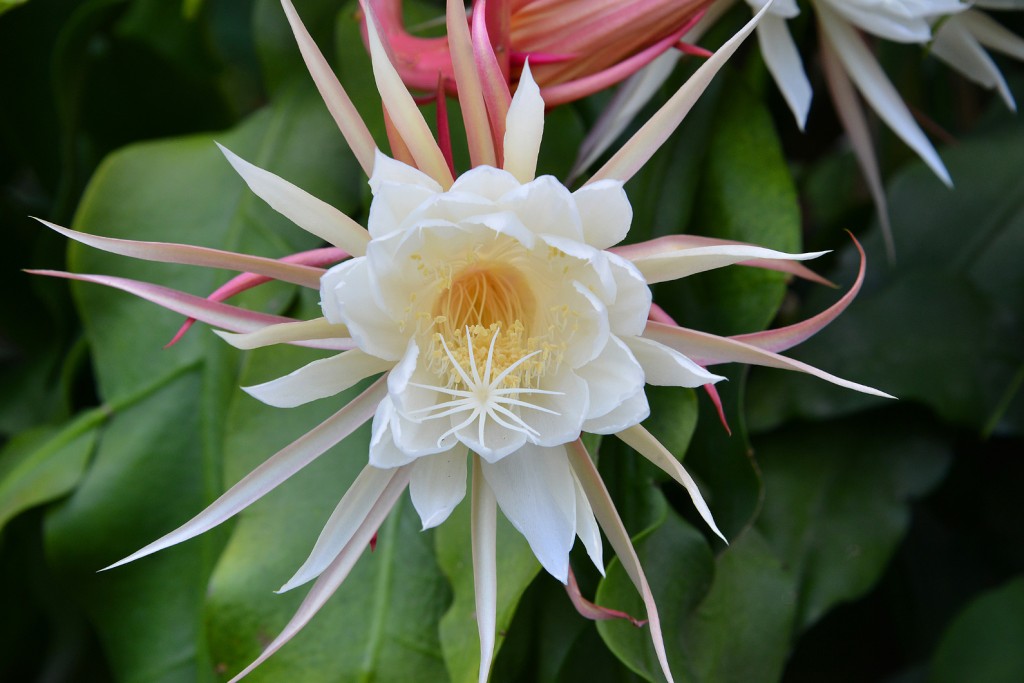 Epiphyllum oxypetalum (Night blooming cactus)
Epiphyllum oxypetalum (Night blooming cactus)
At nightfall be sure to look for the Epiphyllum oxypetalum (Night blooming cactus) with its unique funnel-shaped flowers. You will find these nocturnal flowers near the Carousel. Nearby, look for the interesting Calycanthus ‘Aphrodite’ (Sweet shrub). Bright pinkish-red Magnolia like flowers with alluring fragrance is a true winner in the garden.
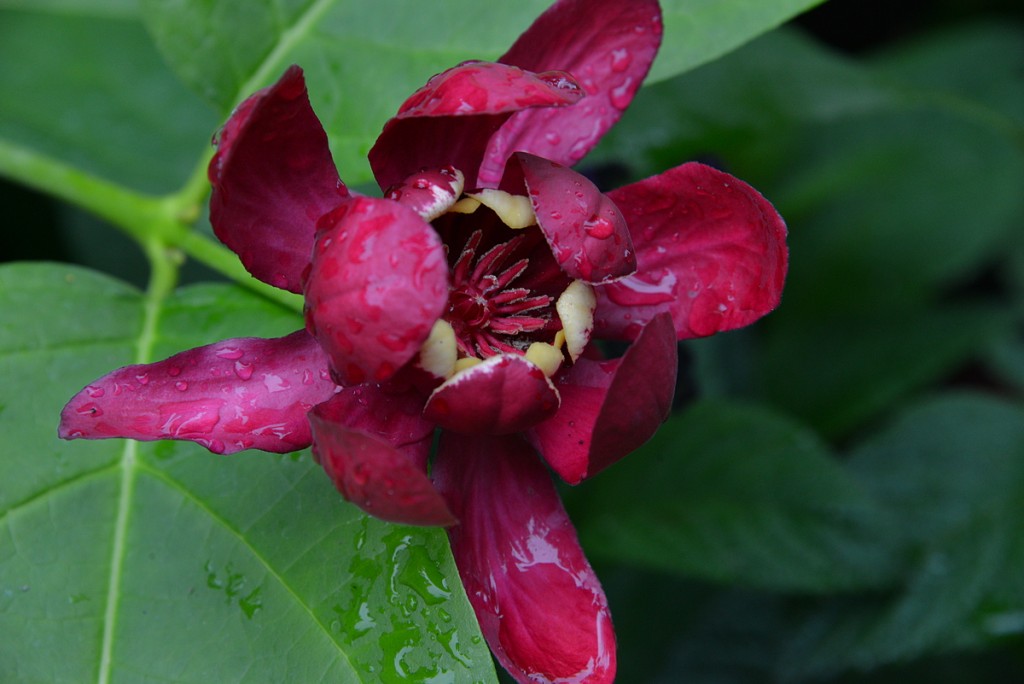 Catalpa speciosa (Indian bean tree)
Catalpa speciosa (Indian bean tree)
Plants that are currently blooming
- Abutilon
- Acanthus (Bear’s breeches)
- Achillea (Yarrow)
- Alocasia (Elephant’s ear)
- Antirrhinium (Snapdragon)
- Astilbe
- Anthriscus sylvestris ‘Ravenswing’
- Aruncus (Goat’s beard)
- Astrantia
- Baptisia (False indigo)
- Begonia (Tuberous and fibrous)
- Brugmansia (Angels’ trumpets)
- Calceolaria (Scotsman’s purse)
- Calycanthus
- Cardiocrinium (Giant lily)
- Catalpa
- Cephalaria gigantea (Yellow scabious)
- Centaurea montana
- Chionanthus virginicus (Fringe tree)
- Cladatris lutea (Kentucky yellowwood)
- Clematis
- Colocasia (Taro)
- Crambe
- Delphinium
- Deutzia
- Dianthus
- Disporum (Fairy bells)
- Epiphyllum oxypetalum (Night blooming cactus)
- Eremurus (Foxtail lily)
- Fuchsia
- Heliotropium (Cherry pie plant)
- Hemerocallis (Daylily)
- Hibiscus
- Hydrangea
- Hypericum (St. John’s wort)
- Inula
- Impatiens
- Iochroma cyanea
- Lantana
- Leptospermum (Tea tree)
- Lobelia
- Maglieta
- Pachystachys lutea (Lollipop plant)
- Pelargonium (Geranium)
- Pentas
- Persicaria (Knotweed)
- Petasites
- Phlomis
- Poncirus trifoliata (Hardy orange)
- Punica granatum (Pomegranate)
- Rheum
- Romneya coulteri (Tree poppy)
- Rosa (Rose)
- Salvia
- Spartium junceum (Spanish broom)
- Stachys marcantha
- Styrax japonicus (Japanese snowbell)
- Syringa reticulata (Japanese tree lilac)
- Tagetes (Marigold)
- Tecoma
- Thalictrum (Meadow rue)
- Torenia
- Tradescantia (Spiderwort)
- Viburnum
- Viola
- Weigela
- Wisteria

